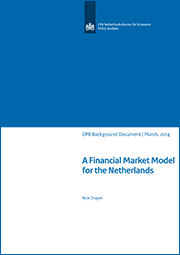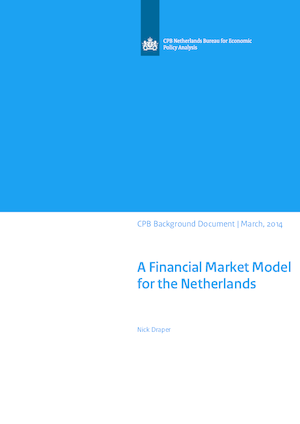A Financial Market Model for the Netherlands

This publication accompanies the Dutch publication 'Advice Commission Parameters, 2014'.
The model describes the stock and bond market (the latter by way of a term structure of interest rates). Both the nominal bonds as well as the development of the stock returns depend on the inflation process which is modelled, too. Net benefits of pensions can be considered as a derivative of bonds and equity, because both the benefits and premiums depend on the investment results. This capital market model is appropriate to evaluate derivative products. The model is developed by Koijen et al. (2010) and estimated by them on US data.
This paper describes estimates based on data relevant for the Netherlands, estimated over a longer period than before (Draper (2012)). It provides a technical documentation of this capital market model and details on the derivations, the estimation and calibration. The estimation results are compared with earlier results.
The Koijen et al. (2010) model is related to Brennan and Xia (2002), Campbell and Viceira (2001) and Sangvinatsos and Wachter (2005). More details of the model can be found in Koijen et al. (2005) and Koijen et al. (2006). A survey of all risks that pension funds are facing, can be found in Broer (2010).
Section 2 presents the model without giving details: its assumptions, parameter restrictions, the link between nominal and inflation linked bonds and the term structure are discussed. Section 3 details on the term structure and on bond funds implementing constant duration. The model is formulated in continuous time, but for simulation and estimation purposes a discretized version is necessary. This discretization and estimation procedure is discussed in section 4. To determine the value of derivative products, as for instance the liabilities of pension funds, risk-neutral simulation is used which is discussed in section 5. The data are presented in section 6. Section 7 gives the estimation results. Section 8 discusses the necessary parameter changes which results in consistency between the model outcomes and the expectations of the Commission Parameters. Section 9 concludes.
